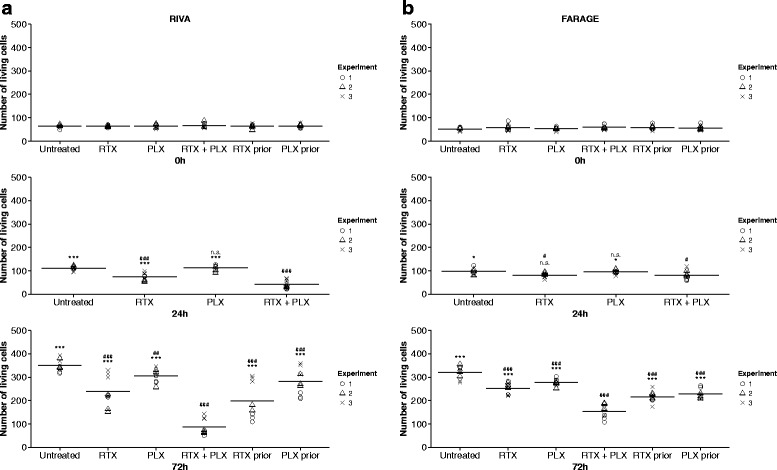Fig. 1.

The growth-inhibitory effect of rituximab was significantly enhanced by plerixafor, in a drug sequence-dependent manner. The diffuse large B-cell lymphoma (DLBCL) cell lines RIVA (a) and FARAGE (b) were exposed to single agent treatment with the anti-CD20 antibody rituximab (10 μg/mL) or the CXCR4 antagonist plerixafor (500 μM) as well as to combination treatment, either concomitantly or with a 24 h time lag. The number of living cells was determined by the trypan blue exclusion method, 0 h, 24 h, and 72 h after drug administration. Horizontal lines represent the mean of three independent experiments, and each geometric symbol represents a counting replicate. RTX prior and PLX prior are excluded from the 24 h plots since they are equivalent to the RTX and PLX groups, respectively, at this time point. Statistical significance between groups was determined using a two-level linear mixed effects model. When using concomitant treatment as reference (RTX + PLX): *p < 0.05, ***p < 0.001, n.s. no significant difference; when using untreated control (Untreated) as reference: # p < 0.05, ## p < 0.01, ### p < 0.001, n.s. no significant difference; RTX, rituximab; PLX, plerixafor; RTX prior, RTX administered 24 h before PLX; PLX prior, PLX administered 24 h before RTX
